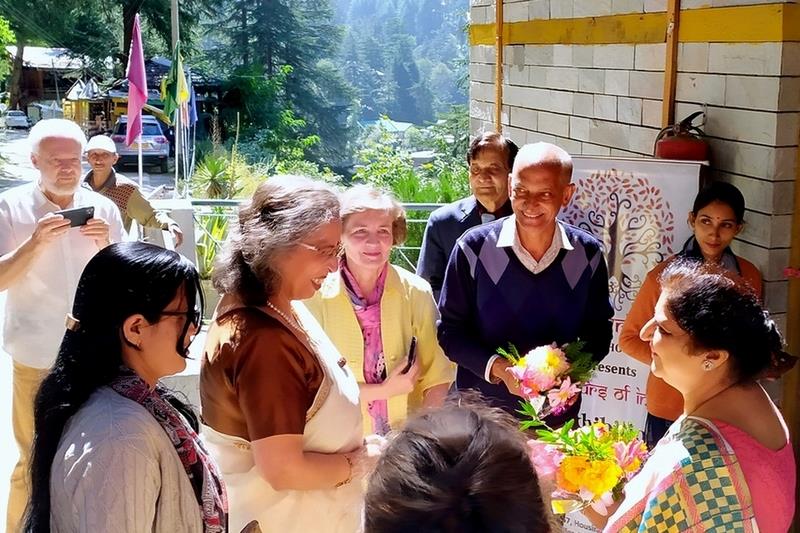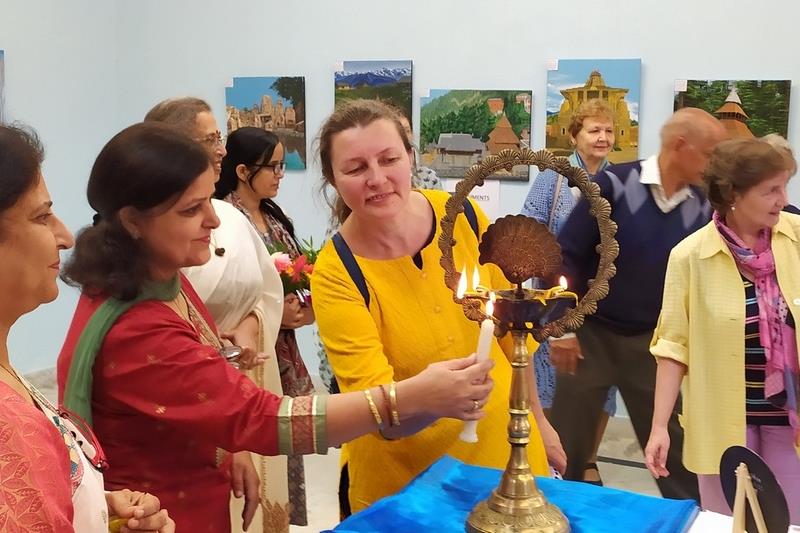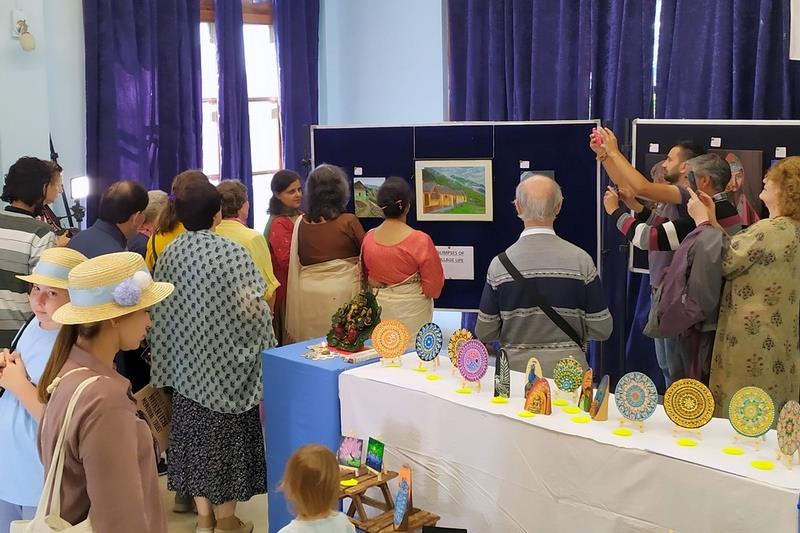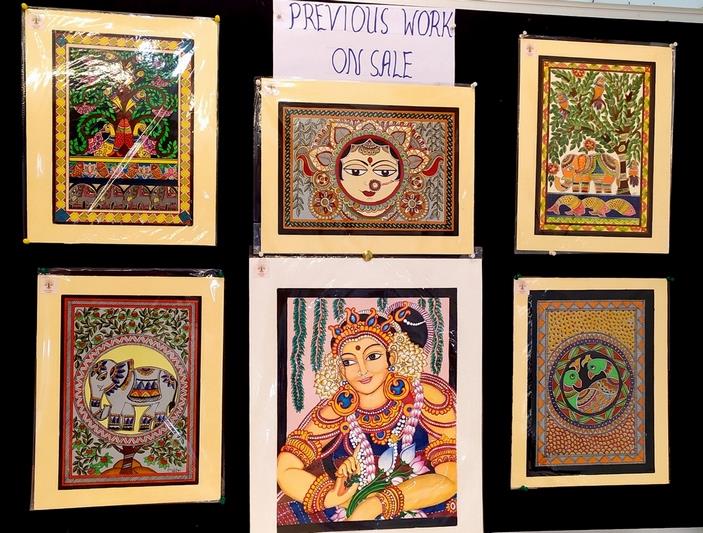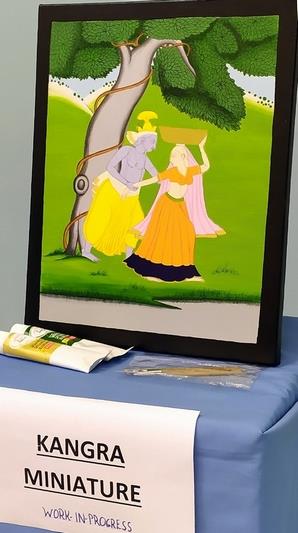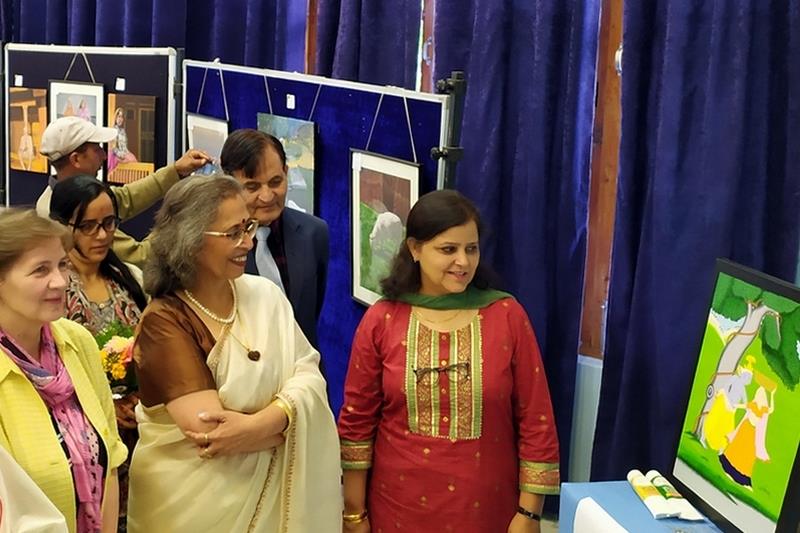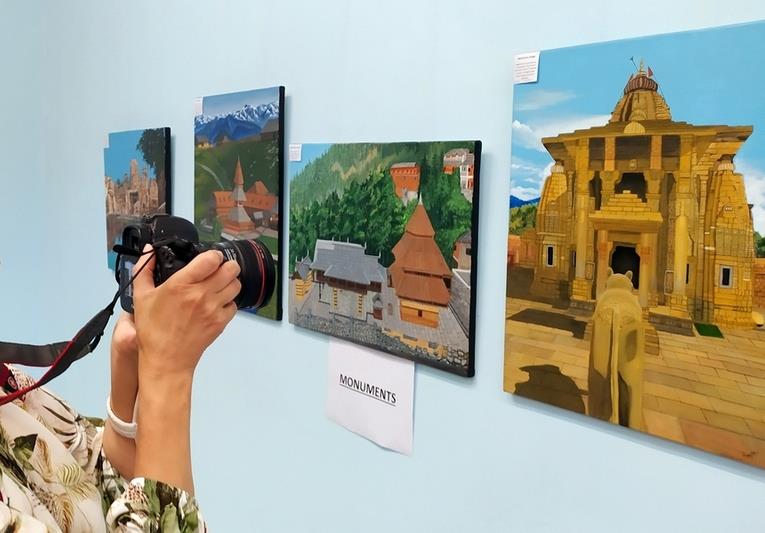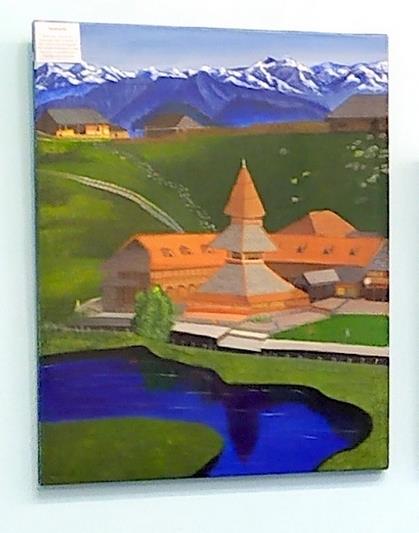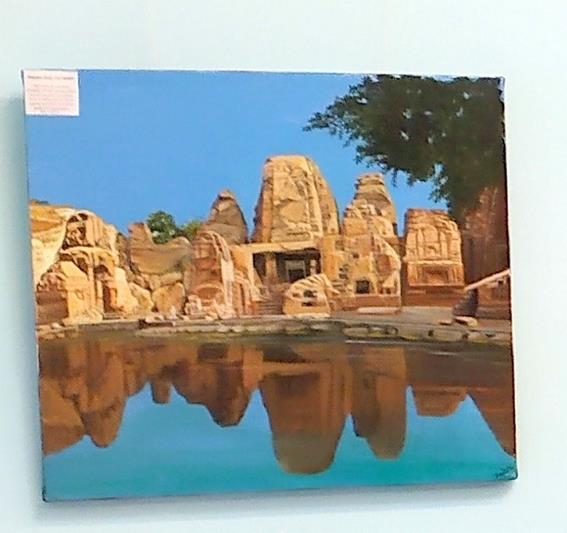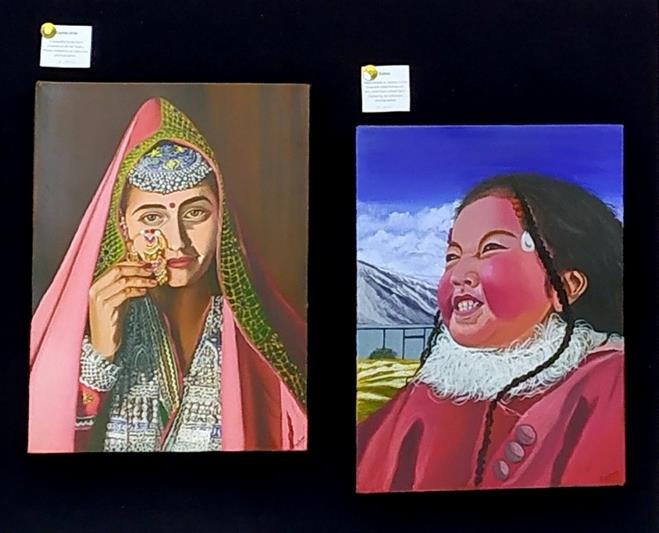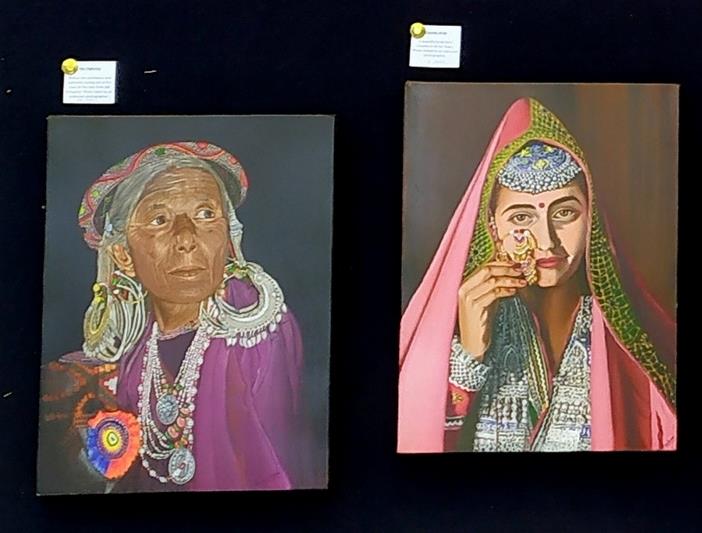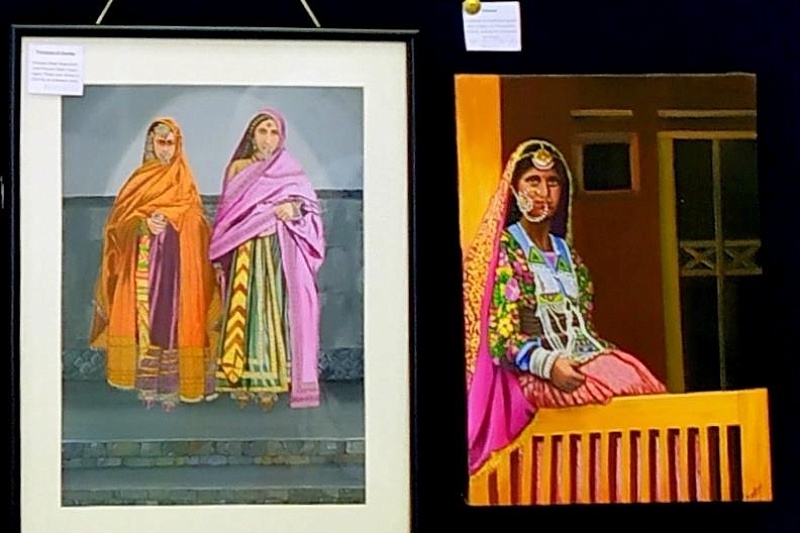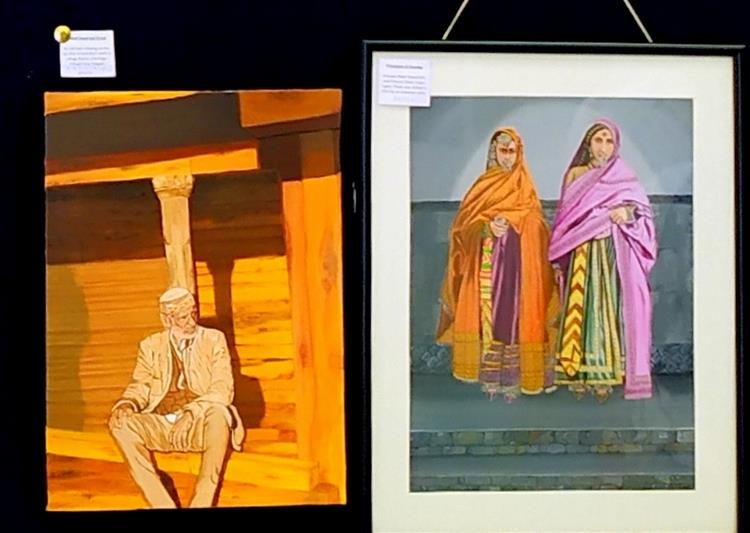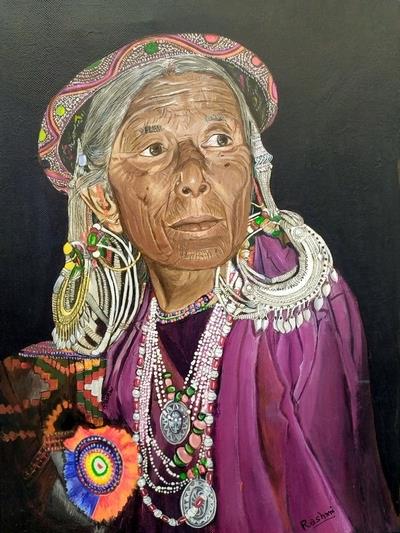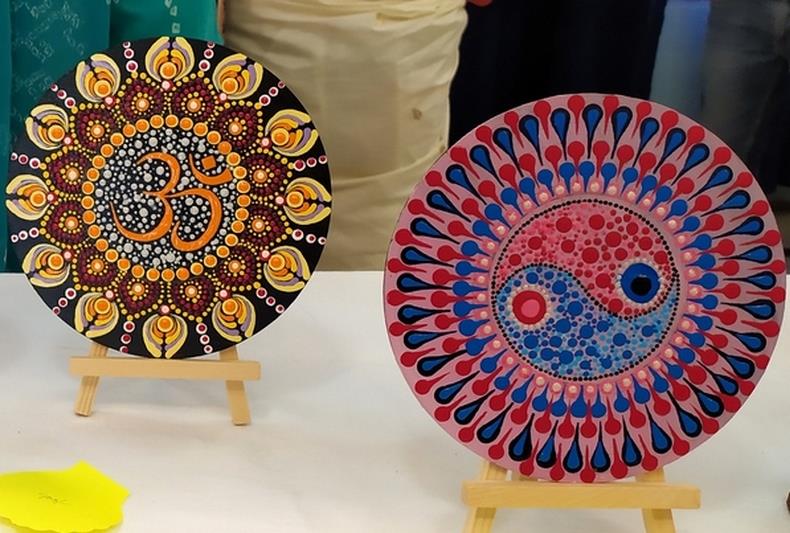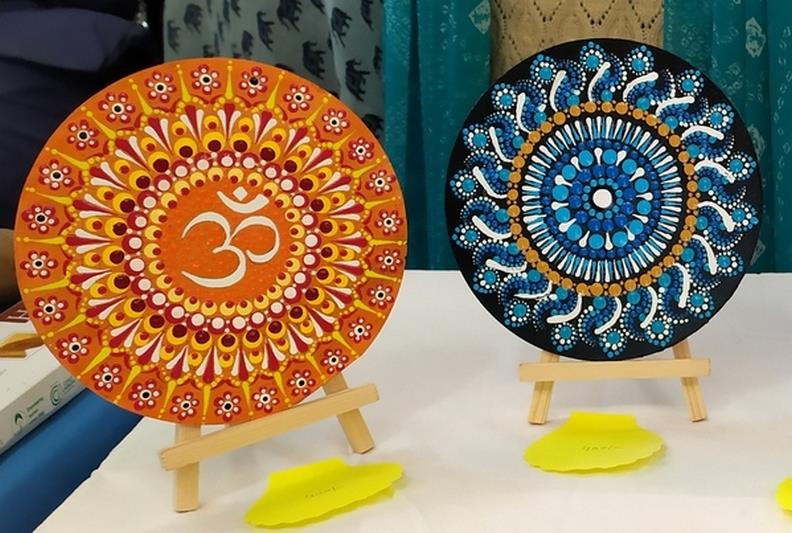“Colors of India” from Dharamsala in the International Roerich Memorial Trust
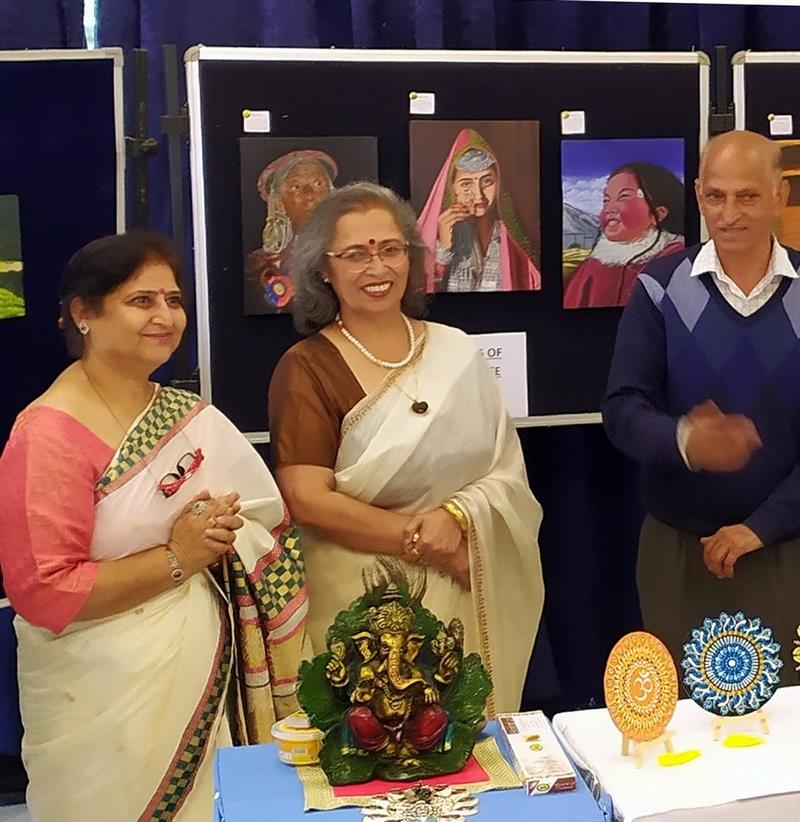
|
On the first day of October a colorful event took place in the Roerich Memorial Estate – the exhibition opening of the artist Rashmi Nag from Dharamsala (India, Himachal Pradesh) in the Conference Hall of the IRMT.
Mrs. Sonia Thakur, the Founder and Director of the Sattvika Group, Director of the Research Development Institute, and a member of the Child Welfare Board of the Himachal Pradesh State, was the Сhief guest of the festival. On behalf of the staff of the International Roerich Memorial Trust the participants and guests were welcomed by Mr Suresh Kumar, the Indian IRMT Curator and Mrs Larisa Surgina, the Russian IRMT Curator, who works in the IRMT on deputation from the International Center of the Roerichs (Moscow). The first visitors were guests from Russia, Belarus and Kazakhstan who came to the Roerichs Estate as part of the International Center of the Roerichs volunteer group to participate in the Roerich Festival, as well as Mr Ramesh Chandra, the previous IRMT Сurator (now retired).
Rashmi Nag and her colleague Monica Bhardwaj represent the “Kalpavriksha Art House” whose core activity is the preservation and development of traditional Indian visual arts. Rashmi Nag's work reflects such ancient art movements as Madhubani painting (Bihar state), ancient Bengali art of Pattachitra (Odisha state), Kangra art and others.
Paintings in the miniature style of Kangra school attracted the special attention of the guests. “Who were these artists, the creators of Kangra miniatures?” – Svetoslav Roerich wrote in one of his essays. – “Whose influence did they have, and how did they develop what we now know as the early Kangra style? [...] According to the legend, the artists who fled from Rajputana found shelter in the mountains and brought with them to the Kangra Valley a technique that was significantly influenced by Mughal art. The new technique that emerged from their contact with the local tradition is what we now call Kangra art. One of the main contributions of these artists is the high technical skill and tradition which, in conjunction with the local style, has been adapted to local needs. The Krishna cult prevalent in these areas has been vividly reflected in the work of most of the artists.”
The Kangra School was famous at the end of the eighteenth century. Nowadays, thanks to the artists like Rashmi Nag, this art is getting a new life and is gaining wide popularity.
Rashmi Nag exhibited her other paintings as well. They depict moments of rural life and portraits of villagers, ancient temples and architectural monuments. All paintings and decorative panels by the artist are characterized by bright clean colors, expressive lines and memorable images.
